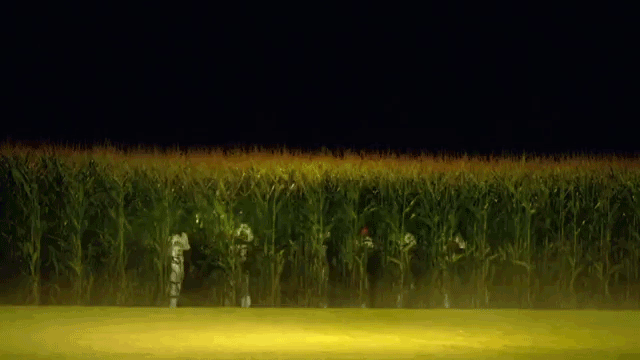Let’s start with one small clarification to our title… going viral isn’t something that can be made. Asking “how to make a video go viral” is like asking how you win an Academy Award without ever being a part of a film. An Academy Award is the outcome of a great performance or contribution, just as going viral is the fortunate outcome of a video that’s highly shareable. So really, you are trying to increase the odds your video is shared in order to go viral. And if that’s the case, you landed in the right place to find out how.
Just because you build it doesn’t mean they will come
 There’s a common misconception that videos are simply uploaded to YouTube and suddenly they have millions of views overnight. What usually happens is that it starts to get shared around, then some influential person/channel/publication pushes it out to pick up the majority of its steam. Relying on this solely organic spread has the same odds of success as making a hole-in-one on a Par 4. At Walk West (formally Greenroom Communications), we believe you need a healthy mix of paid, owned, and earned media to get the ball rolling. Simply putting a video on YouTube, unless you have a large and active subscriber base to begin with, typically doesn’t work.
There’s a common misconception that videos are simply uploaded to YouTube and suddenly they have millions of views overnight. What usually happens is that it starts to get shared around, then some influential person/channel/publication pushes it out to pick up the majority of its steam. Relying on this solely organic spread has the same odds of success as making a hole-in-one on a Par 4. At Walk West (formally Greenroom Communications), we believe you need a healthy mix of paid, owned, and earned media to get the ball rolling. Simply putting a video on YouTube, unless you have a large and active subscriber base to begin with, typically doesn’t work.
Plan to give yourself a head start by aiding in the discoverability process. Come up with a distribution plan based on your target audience that makes your content discoverable. Where are they engaging? Research your most active channel as well as other channels your target audience is on to know where you might put a media spend. Post the video on your social networks, website, and enlist the help of influencers (these usually need to be compensated endorsements) to spread your message. You want to increase the chances your video will be seen and shared by the right people and at the right time.
Once you have established that, consider ways you can extend your story or what action you want the viewer to take immediately following the video. Videos can launch larger digital campaigns with specific calls to action, or simply entice the viewer to research more about you. The strategy depends on the goals for making your video in the first place. Regardless of how big or small, the distribution strategy should be decided at the beginning of the process so it can be integrated.
Great storytelling instead of hard selling
Along with having a great distribution strategy, there are other aspects that can make your video more shareable. Keep your video short without compromising content. A study by Wistia stated that 75% of your audience will still be watching during a 2 minute or less video, versus 40% for a video lasting 4-5 minutes. Specific time recommendations really depend on the subject of what you are covering, but sticking to around the 2-minute mark is the good start. The same Wistia study also notes about 20% of your audience is going to drop off within the first 30 seconds. Given that and the national attention span clocking in at 8 seconds (one second less than a goldfish) your video needs to grab your audience’s attention and fast.

Finally, we believe that, above all, the most important aspect of a shareable video is capitalizing on a real, authentic human emotion ranging from humor to heart-warming. Ask yourself, will my video make people laugh? Feel moved? Ponder their life? Is it relatable? Does it elicit an emotional response? What connection am I making? Whatever subject matter you are covering, it is imperative to tell – not sell. The best videos allow your audience to feel something while watching, as well as be entertained.
We center a lot of our internal brainstorming and projects around our unique idea of S.M.A.S.H. We look for unique opportunities to create moments or situations you typically don’t see, as well as capturing spontaneous, genuine moments. S.M.A.S.H. stands for:
- Speed : Keep content fresh and relevant, don’t be afraid to pivot.
- Music : Whether it’s at the core of the video or the open/close, it’s pretty standard for anything that isn’t snackable content.
- Asymmetry : Look for (or create) moments that are out of balance, things that you don’t normally see.
- Spontaneity : Don’t be afraid to take any additional great moments and fit them into the piece. They may not have been part of your original plan, but they are often the best, and most memorable, moments.
- Humor : Not for every video, but unless it’s an incredibly serious subject, you need to find a way to make the viewer smile. How? That’s worth an entirely different blog post.
For questions on this blog post, or suggestions for what you’d like to read next, let us know.

